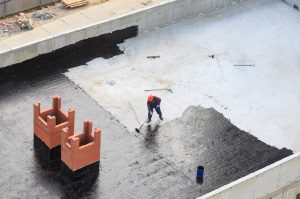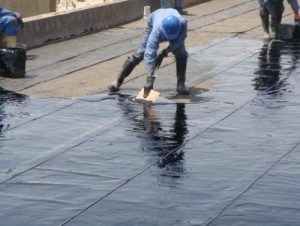Understanding Waterproofing in Construction
Waterproofing is a crucial aspect of construction, ensuring the longevity and durability of structures against the damaging effects of water infiltration. From foundations to roofs, implementing effective waterproofing measures is essential. In this article, we’ll delve into the various aspects of waterproofing and its significance in construction. What is waterproof in construction?
Why Waterproofing Matters
Water can be a silent destroyer of buildings. It seeps into the smallest cracks and crevices, gradually causing structural damage, mold growth, and compromising the integrity of a construction project. Waterproofing serves as a protective barrier, preventing water from infiltrating and safeguarding the structure from potential harm.

The Foundation: Where it All Begins
The foundation of a building is its literal and metaphorical base. Ensuring a waterproof foundation is fundamental to the longevity of any structure. Water can penetrate through the foundation, causing issues such as basement flooding and compromising the stability of the building. Foundation waterproofing methods include the application of waterproof membranes, coatings, and proper drainage systems.
Exterior Walls: Guarding Against the Elements
Exterior walls are the first line of defense against the elements. Waterproofing these walls is crucial to protect the interior spaces from moisture and water damage. Techniques like applying waterproof coatings, using water-resistant materials, and installing effective drainage systems help in creating a robust barrier against water intrusion.
Types of Waterproofing
There are various methods of waterproofing, each suited for different areas of a building. Understanding these methods is essential for implementing the right solution for specific construction needs.

1. Basement Waterproofing
Basements are particularly vulnerable to water infiltration due to their below-ground nature. Basement waterproofing involves the use of sealants, drainage systems, and waterproof membranes to create a watertight barrier. This prevents issues such as dampness, mold, and structural damage.
2. Roof Waterproofing
The roof is another critical area where water can cause extensive damage. Roof waterproofing involves the application of protective coatings, membranes, and proper drainage solutions. This not only prevents water leaks but also enhances the overall lifespan of the roof.
3. Exterior Wall Waterproofing
Waterproofing exterior walls is essential to prevent water from seeping into the building envelope. This can be achieved through the application of waterproof coatings, sealants, and the use of water-resistant materials in the construction of exterior walls. Click here for more information.
4. Foundation Waterproofing
Foundation waterproofing is a comprehensive approach to safeguarding the base of a building. This may include the installation of drainage systems, the use of waterproof membranes, and ensuring proper grading to direct water away from the foundation.
The Role of Professionals in Waterproofing
While some waterproofing measures can be undertaken as part of the initial construction process, others may require the expertise of professionals. Hiring qualified waterproofing contractors ensures that the right materials and methods are employed, addressing the specific needs of a structure.
Professionals assess the unique challenges presented by a construction project and recommend customized waterproofing solutions. This may involve a combination of techniques to create a robust defense against water infiltration.
Challenges and Innovations in Waterproofing
As construction technology advances, so do waterproofing solutions. Innovations in materials and application methods continue to improve the effectiveness and durability of waterproofing systems. Challenges such as climate change and extreme weather events also drive the need for more resilient and adaptable waterproofing measures.
New materials, including advanced sealants and membranes, are designed to withstand harsh weather conditions and provide long-lasting protection. Additionally, sustainable waterproofing solutions are gaining popularity, addressing environmental concerns and promoting eco-friendly construction practices.
Conclusion
In conclusion, waterproofing is an integral aspect of construction that should not be overlooked. Whether it’s protecting the foundation, exterior walls, or the roof, implementing effective waterproofing measures is essential for the longevity and durability of a building. As construction methods evolve, staying informed about the latest waterproofing technologies and consulting with professionals can ensure that structures stand the test of time, resilient against the forces of water and the elements.

